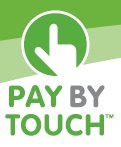
Behold the Body Biometric
Before long, we may use fingerprints, iris scans, and voice recognition to log onto computers, buy groceries -- even when picking up kids from school
 Slide Show >> This could be you: At a convenience store, a scanner reads your fingerprints and deducts the price of a coffee and doughnut from your checking account. Once at the office, your employer uses software to monitor the rhythm of your typing or a Webcam to measure the proportions of your face before letting you onto the network. Your call to customer service won't go through until you're identified by the cadence of your voice. Later, at an ATM, a sensor measures the blood flowing through your palm before permitting a withdrawal. When you go inside to approve a transfer, your signature on an electronic tablet gets similar treatment. Picking up the kids at school, a digital camera photographs your iris to confirm its unique pattern. After getting home and unwinding, you log on to buy some concert tickets and pay, again, with your fingerprint, this time on a sensor built into the laptop. (see Pay by Touch Online Demo here)
Slide Show >> This could be you: At a convenience store, a scanner reads your fingerprints and deducts the price of a coffee and doughnut from your checking account. Once at the office, your employer uses software to monitor the rhythm of your typing or a Webcam to measure the proportions of your face before letting you onto the network. Your call to customer service won't go through until you're identified by the cadence of your voice. Later, at an ATM, a sensor measures the blood flowing through your palm before permitting a withdrawal. When you go inside to approve a transfer, your signature on an electronic tablet gets similar treatment. Picking up the kids at school, a digital camera photographs your iris to confirm its unique pattern. After getting home and unwinding, you log on to buy some concert tickets and pay, again, with your fingerprint, this time on a sensor built into the laptop. (see Pay by Touch Online Demo here)FAIL-SAFE IDENTIFIER . Welcome to the biometric world. In an effort to prevent identity theft and boost efficiency, companies are becoming ever more vigilant in verifying people. Biometrics essentially selects a physical or behavioral feature, say a voice, and by measuring myriad patterns contained within, creates a fail-safe identifier. It's much harder to get ahold of someone's iris or imitate their voice than it is to find their keys, password, or mother's maiden name. And biometrics is catching on. Every manner of measurement above is in use in the U.S. or will be by the end of the year in one form or another.
An industry leader, Pay By Touch, which allows people to pay with their fingerprint at certain stores, has more than 2.5 million registered users (see BW Online, 03/28/06, "Biometrics: Payments at Your Fingertips").
No matter what they measure, biometric applications work in a similar way, translating data into an identifier for an individual. But each company crows about the advantages of its own device. SensibleVision offers face-recognition software for computers that continuously monitors a user at a given machine. Makers of non-contact devices like the iris camera and palm reader say their tools are more hygienic than, say, a fingerprint scanner.
COOLNESS FACTOR. Lyle Berkowitz, a doctor at Chicago's Northwestern Memorial Physicians Group, says patients recognize a coolness factor in face-recognition software. At the same time, it would be natural to feel uneasy about sharing such intimate information, especially since the industry remains largely unregulated. But so far, the concerns haven't spoiled the biometrics party.
Halperin is a reporter for BusinessWeek Online in New York
.jpg)